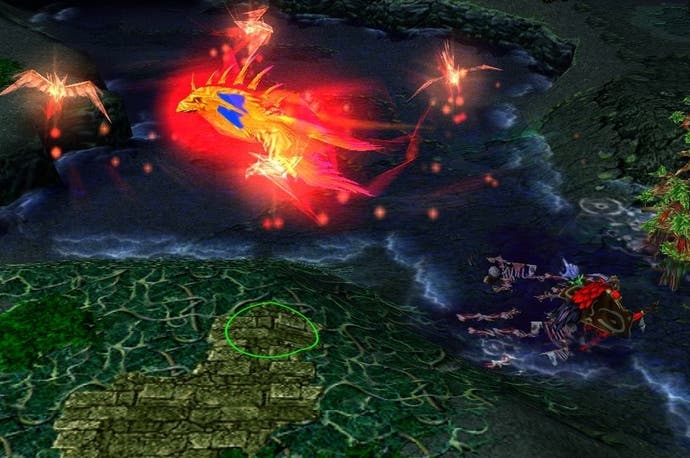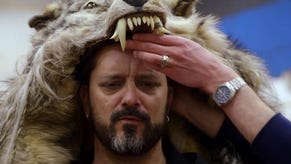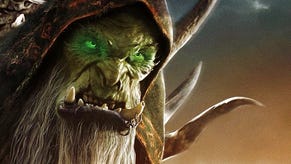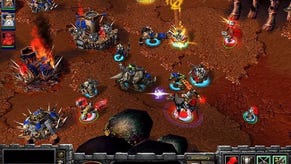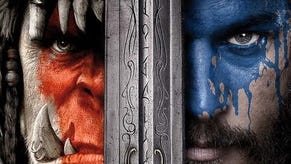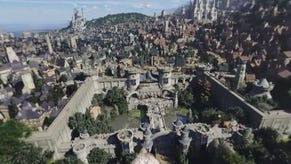The Story of DOTA
How a bastard mod became its own genre.
Every Sunday, we dust off an article from the Eurogamer archive that you may have missed at the time or may enjoy again. Valve announced The International 2014 for Dota 2 this week, so we thought we'd revisit Paul Dean's piece on the origins of the MOBA genre. This article was originally published on 16th August 2011, so some facts and figures are now out of date, but it still tells an interesting back-story and provides a snapshot of the genre's progress at that time, back when Dota 2 was a barely known quantity.
It's not often that we get to declare that there's a new gaming genre in town. What began as a hybrid of real-time strategy and role-playing game elements, stitched together by a talented team of modders, has become a dominant online game type with millions of players. Those millions are now the target of two of the biggest game developers in the world: Valve and Blizzard.
This genre includes Heroes of Newerth, Demigod, in-development StarCraft 2 mod Blizzard DOTA, League of Legends and the forthcoming Dota 2 from the mighty Valve. The latter two will be facing off at the gamescom convention in Cologne this week: the hugely popular League of Legends will be showcasing its latest update, Dominion, while Valve will be debuting Dota 2 by giving away an unprecedented amount of money in a tournament.
How much money? The prize pool is $1.6 million, the largest for any single eSports event ever, with exactly $1 million of that going to the winning team. That's how big this genre has become.
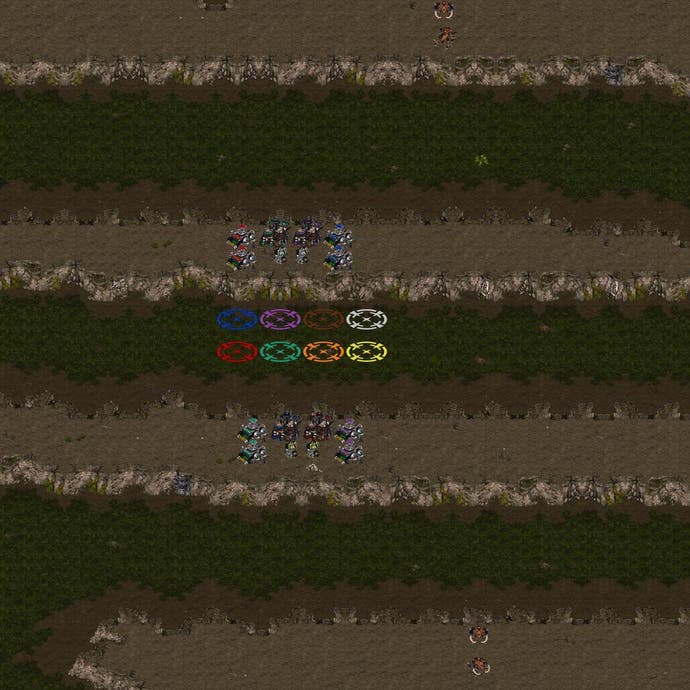
But what is it, exactly? Where has it come from and how has all this grown from just one mod? The jury's still out on whether to call the genre MOBA, for Multiplayer Online Battle Arena, or DOTA, from Defense of the Ancients, one of its origins - and that may be more than a mere turn of phrase if Valve's move to trademark the word "Dota" ends up going to the courts.
A video games archaeologist dusting off the genre's genesis would uncover its RTS roots in the StarCraft map, Aeon of Strife. This was a considerably modified map on which, instead indulging in the usual base construction and unit command, each player controlled a single, powerful hero unit. While they still had a base and an army, the AI managed these, spawning and sending waves of units against a similar, opposing base along three different lanes of attack. These lanes were dotted with defensive towers, which the heroes and their armies would have to take down (or defend) before reaching the base proper.
This has caused some to liken the genre to tower defence, but it's a misleading comparison. Sure, there are towers involved, and you can defend them, but the gameplay is quite different.
In Aeon of Strife, the role of players was neither to micromanage this battle of attrition nor to build any structures, but instead to carefully nudge the balance of the carnage by being in the right place at the right time. By supporting their AI units, players could help them destroy enemy defensive structures and, eventually, the base. The other side's heroes would be doing the same and often both would clash upon the field of battle.
With the release of Warcraft 3 in 2003, a keen modder known by the handle Eul began development on a similar map that would support up to 10 players, which he called Defense of the Ancients (DOTA). This was where the RPG elements were further refined.
The core of the game remained the same - RTS-style point-and-click control of a single hero - but now these heroes wielded wildly different abilities, could purchase a variety of different weapons and would level up and gain even more skills. Killing opposing heroes and AI units rewarded a player with both experience and cash - and, of course, during the time that opposing heroes were respawning, their opponents could swing the battle in their favour.
After its release, Eul stopped work on DOTA and other modders stepped in and tried their own versions. The most successful of these was Steve Feak, better known by his bizarre handle: Guinsoo.
Guinsoo developed DOTA: Allstars, a kind of greatest hits mixing the best elements of other DOTA mods and adding his own content. Allstars featured a map dotted with neutral monsters, boasted many heroes and had an overwhelming array of special items, some of which could be combined in recipes to create even more powerful artefacts.
Guinsoo was joined by Steve "Pendragon" Mescon. Still a teenager, Pendragon built the forum that became the backbone of the DOTA community, allowing Allstars players to congregate, to arrange games and, critically, to provide feedback on the game's tweaks and balancing.
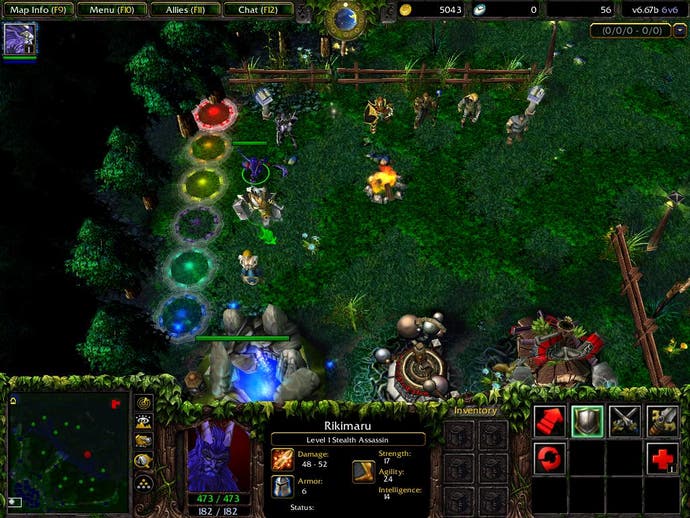
After two years, Guinsoo passed the reins to a reclusive modder called Abdul "IceFrog" Ismail. Inspired by the careful weighting of StarCraft and Warcraft, IceFrog endlessly tweaked the balance of the characters and items. While other multiplayer games might add new maps with each release, Allstars instead continued to focus on just one level in an attempt to create a perfectly, precisely honed experience. No combination of heroes or items should outweigh any other; no attribute should become too powerful.
Meanwhile, Pendragon's forum expanded like nobody's business, reaching 1.5 million users. Many of these actively participated in the development of the mod by providing additional content or artwork or testing AI bots. As the years rolled on, Allstars became an enormous collaborative project, endlessly rebalanced in an ongoing effort to add new content and perfect what was already included. It became a popular game amongst cyber-athletes, featured at many tournaments around the world, and was even the subject of a song by the Swedish singer Basshunter.
By 2008, after countless mind-bending iterations, DOTA had become something almost unique: a massively successful free game mod created entirely without developer support. The potential to go commercial with a game like this was becoming obvious. In 2009, two independently created DOTA-inspired titles were released. One was an enormous success.
Demigod, from Gas Powered Games, did moderately well, though players complained about its balance and numerous bugs. On the other hand, the free-to-play League of Legends, developed by Riot Games, was very much the spiritual successor to DOTA in both content and execution - and it also built up an enormous player base.
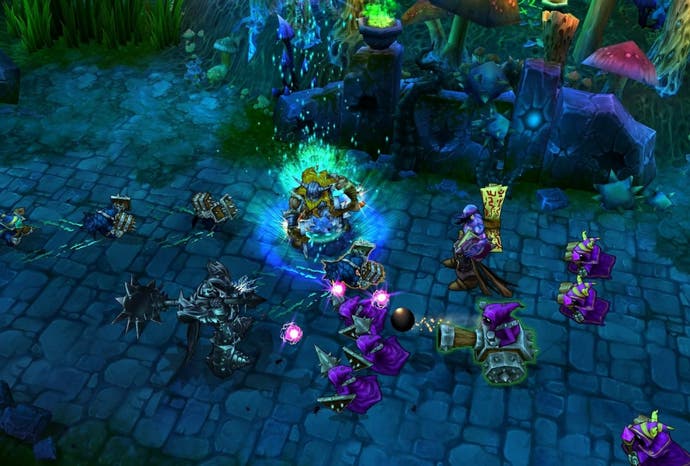
Both Guinsoo and Pendragon had joined Riot, with the latter working to foster the same community spirit that had made DOTA a success. League of Legends hardly touched DOTA's game mechanics, but it did introduce persistent accounts that allowed its players to gradually unlock more characters to play with, content that Riot has continued to add.
In a move that foreshadowed other free-to-play titles like World of Tanks, Riot allowed players to purchase any characters or content if they wished, but with the proviso that nothing bought couldn't be unlocked through gradual play anyway and, most importantly, would not unbalance the game. Paying money got you new stuff, but it wasn't better stuff.
The philosophy was not to hard-sell the game to a community that was already enjoying DOTA, but instead to offer them a new, more polished experience and the option to fast-track through it for just a little bit of cash. "We believe that if we deliver value, then people will reward us. It's not the other way around, like, 'Let's go monetise.' We don't think that's what gamers want," says Riot co-founder Marc Merrill. "It was a big leap of faith, of course. Trust me, there were many naysayers along the way. And there still are." It certainly worked, as LOL now boasts over 15 million registered accounts.
Riot encouraged team play by giving players experience if they assisted in killing an opponent, and introduced both a tutorial and in-game tips in response to new players struggling with the learning curve of DOTA-style games. They also ensured that finding a game was effortless; matchmaking algorithms made sure players were paired with team-mates and opponents of appropriate skill levels.
As Riot continually tweaked and added new content to its game, LOL sat largely unchallenged at the head of a genre that was still niche. In 2010, Heroes of Newerth joined what PC Gamer called this "great, unnoticed community of the PC gaming world" and though its developer S2 Games enjoyed strong sales, Newerth was unable to unseat League of Legends. Nevertheless, a much bigger rival was just over the horizon.
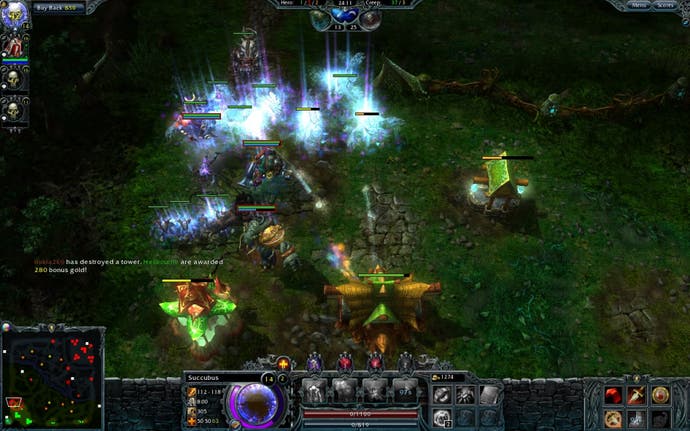
In October 2010, Valve Software announced Dota 2, a heavyweight challenger to LOL from a powerful software house. The announcement was not news to many. IceFrog had said a year before that he was leading a team at Valve and in August 2010 the company had moved to trademark the term 'DOTA'. It was obvious what was brewing.
However, the trademark move disappointed DOTA community members - who felt that DOTA was a non-profit project created and contributed to by many people - and also Blizzard, who publicly declared that Valve was "taking it away from the Blizzard and WarCraft 3 community," an uncharacteristic move for a mod-friendly developer. Shortly after, Pendragon filed for and obtained trademark for the phrase 'Defense of the Ancients', while 'DOTA' is still being disputed.
IceFrog has continued to tweak the original Dota, but most of his time is now devoted to what will become a high-budget remake of the game in Valve's Source engine. Like LOL, Dota 2 (note the lower-case styling - Valve argues that it's no longer an acronym, but a word in its own right) will feature bots, a tutorial and an in-game system for matching players of similar ability.
Meanwhile, Blizzard has also got in on the act - though some might say it's rather late in participating in a trend its games helped to create. Blizzard DOTA, an internally developed mod for StarCraft 2 that's still in production, is its own take on the genre and the mod's heroes will be lifted from Blizzard's various franchises, "a bit like Super Smash Bros," while a sprinkling of resource management will be added.
With Dota 2's public unveiling taking place opposite Dominion's, the two are bound to be compared. It's not yet clear if Dota 2 will be free-to-play, but if it is then it will be in direct competition with League of Legends. With the Steam platform behind it, as well as Valve's proven ability in remaking several other mods (such as Counter-Strike and Alien Swarm), Dota 2 is sure to be the first serious rival that LOL will face - and this rivalry could well dictate the development of this genre.
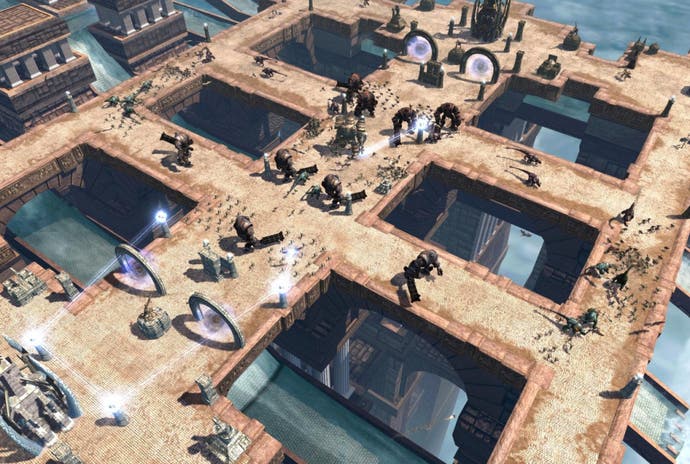
While Valve has remained extremely tight-lipped about Dota 2, and IceFrog still refuses to comment, Marc Merrill does not seem worried about this big-budget launch. He sees the genre as one that is still very much in development and which could take many new directions, which informs Riot's philosophy.
"One of my favourite quotes is from Charles Darwin," says Marc. "'It is not the strongest of the species that survives, nor the most intelligent. It is the one that is the most adaptable to change.' It's such a dynamic industry, constantly changing, that the way to optimise is to have the smartest, most engaged people, great problem-solvers that can react to these circumstances."
It may well be that Riot will move further away from an adherence to the DOTA formula, as it has already abandoned the idea of endlessly honing one single map and game mode, something that must surely be getting tired after all these years. Dota 2, meanwhile, will have to boast more than just some fancier graphics, particularly if it wants to engage DOTA purists already happy with what they have.
While gamescom will be a showdown of sorts, it may also represent something of a parting of the ways, a chance for this new genre to flower and to flourish. Two things are for sure: it will certainly raise the profile of the genre born from DOTA - and it will make one gaming team very rich.
